IN APRIL OF 1977, British Prime Minister Margaret Thatcher was taken on a visit to one of the many legendary classical Chinese gardens of Suzhou. The one chosen for her was called The Garden of the Futility of Politics. The extraordinary name surely stuck in the British leader’s mind–particularly as she would go on to struggle to implement her policies.
But the garden’s message was not about politics at all. Chinese classical gardens do have messages, but they are more subtle and buried more deeply.
Unlike gardens which are filled with lush overgrown plants, giant statues and sculptures and fountains in the West, Chinese classical gardens are deliberately designed so that no matter where visitors stand, they can never see the whole scene at once.

Even if they spend an entire day in a garden, they will never discover all of its secrets, not to mention the fact that the greenery and plants are enchanting in different ways in the four seasons. This element of exploration has helped the ancient gardens remain popular attractions nowadays. On every visit, you see new sights.
The modern city of Suzhou houses dozens of gardens, and the Humble Administrator’s Garden (拙政園), Lion Grove Garden (獅子林), Canglang Pavilion(滄浪亭) and Lingering Garden (留園) are the four most well-known gardens in the city.
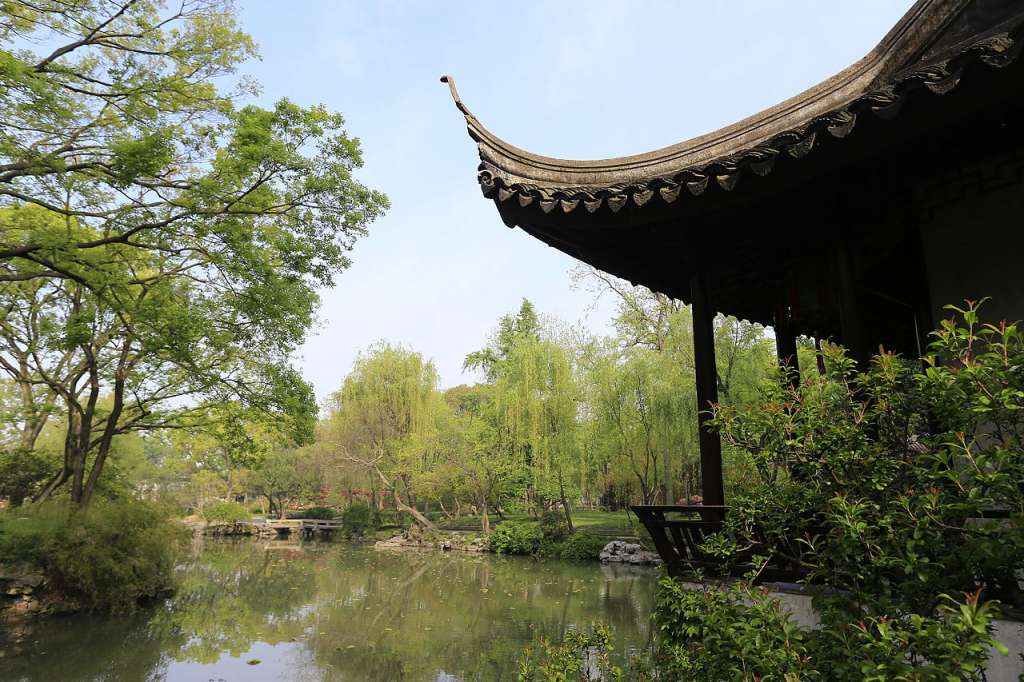
Across all of China, four gardens are hailed as the most famous: The Humble Administrator’s Garden and the Lingering Garden in Suzhou, Beijing’s Summer Palace (頤和園) and the Chengde Mountain Resort (承德避暑山莊).
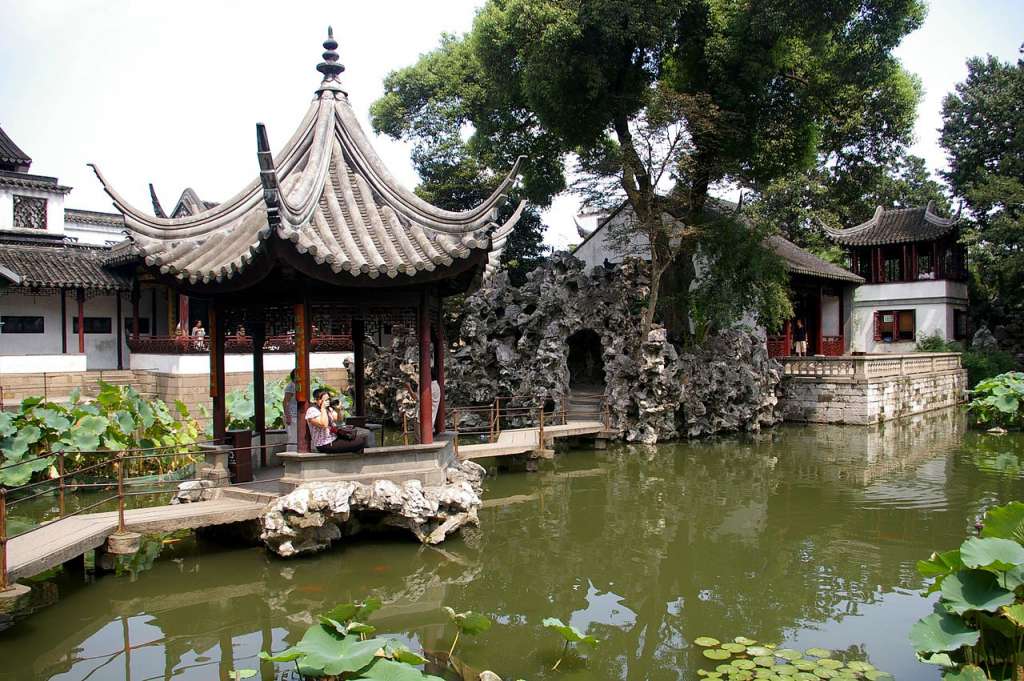
Chinese gardens are harmoniously mixing man-made architecture such as pavilions, halls, pathways, small bridges with plants, natural scenery, rocks and horticulture.
Though man-made, Chinese gardens look like it is springing from nature.
The Humble Administrator’s Garden was originally built during the Ming Dynasty, yet it has been renovated many times since then. There are many distinctive architectures in the garden which is reputed as an archetype of imperial and private scholar gardens.
With spacious buildings, the garden landscape is breath-taking and immersive. Visitors can appreciate the never-ending design from the featured buildings, zigzagging bridges, exquisite ponds, exuberant trees and flowers.

The Drifting Fragrance Hall (遠香堂) is the most notable building which is lined with antique furniture and windows that feature intricately carved designs. Travellers in the hall have a glimpse of trees or pavilions and revel in wonderful sight of beautiful scenery outside.
Also, the Secluded Pavilion of Phoenix Tree and Bamboo (梧竹幽居) in the garden utters a strong atmosphere of quietness. The unique pavilion has four moon gates on all four sides, thereby providing frames from reveling in the exquisite green scenery for visitors.
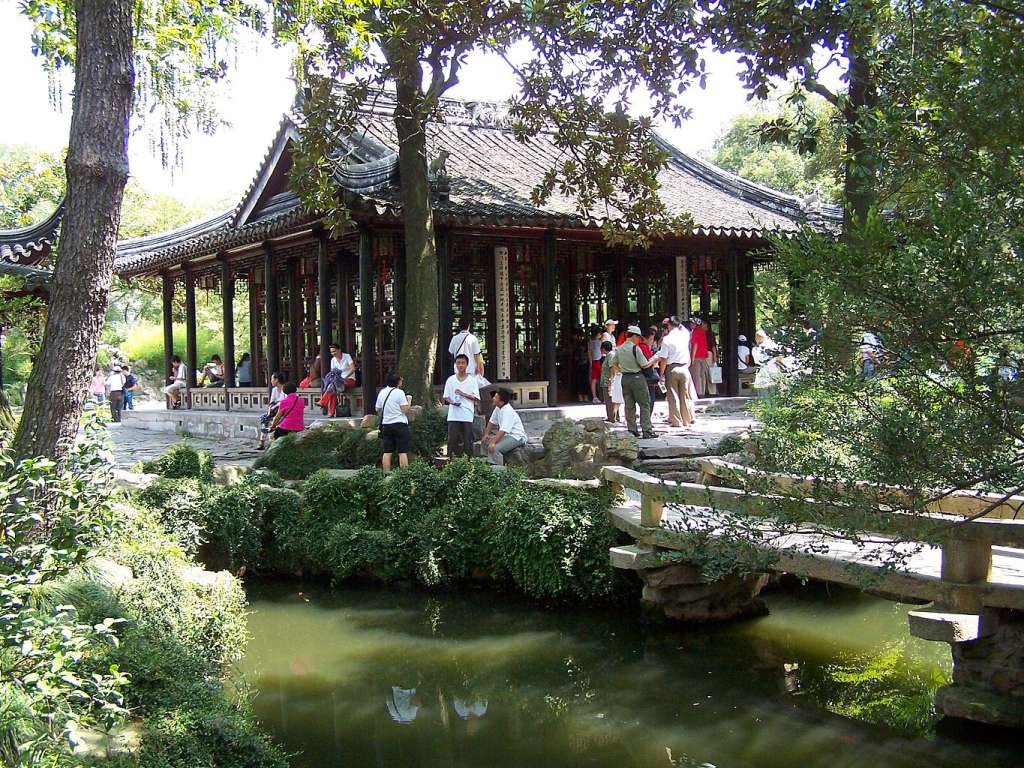
The Humble Administrator’s Garden is a masterpiece of classical Chinese garden design – in which art and nature are integrated perfectly to create ensembles of peaceful harmony. The garden is fanciful, decorative and is connected by walkway for inducing travellers to explore amazing scenes.
Rockery and water are quintessential elements in Chinese gardens to create a nature-like landscape. Rock is a symbol of virtue and stability, while water represents movement and lightness.
As Chinese gardens are a microcosm of the larger natural world, water or a pond in a garden symbolizes a lake or even the ocean. Green plants also blend the architecture with natural elements.

Depicted as the Kingdom of Rockeries, the Lion Grove Garden is surrounded by ponds and filled with stones of various shapes and distinctive traits. The rocks are made of limestone from Wuxi’s Lake Tai (太湖) and piled up into forms that resemble lions, tigers, bears and other animals. The labyrinthine rockeries produced the illusion of living in mountains.
IM PEI’S CONTRIBUTION
Late Chinese-American architect Ieoh Ming Pei is a legendary architect. In 1920s, he had spent his memorable childhood time in the Lion Grove Garden – a villa belonged his family – after he moved to Shanghai from Hong Kong. Indeed Pei drew inspiration from the Lion Grove Garden and kept some of his designed architecture, notably Suzhou Museum, grounded with distinguishing Chinese elements
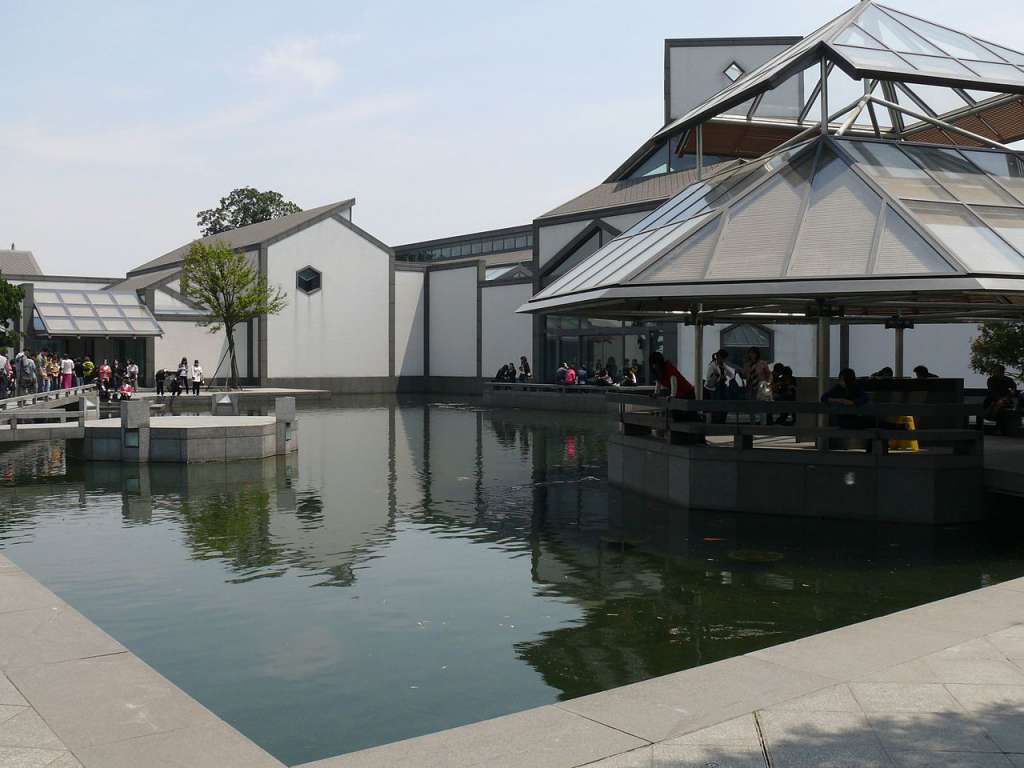
In 2000s, Pei returned to Suzhou to design the renowned Suzhou Museum in his eighties. The museum boasts white walls and grey roofs epitomizing the traditional Chinese style.
Pei successfully embraced green plants and Lotus ponds in designing the modern Suzhou Museum – to be in harmony with classical gardens and buildings around it. The shape of pine and sweet-scented osmanthus are elegant to complement the hard-edged lines of the museum.
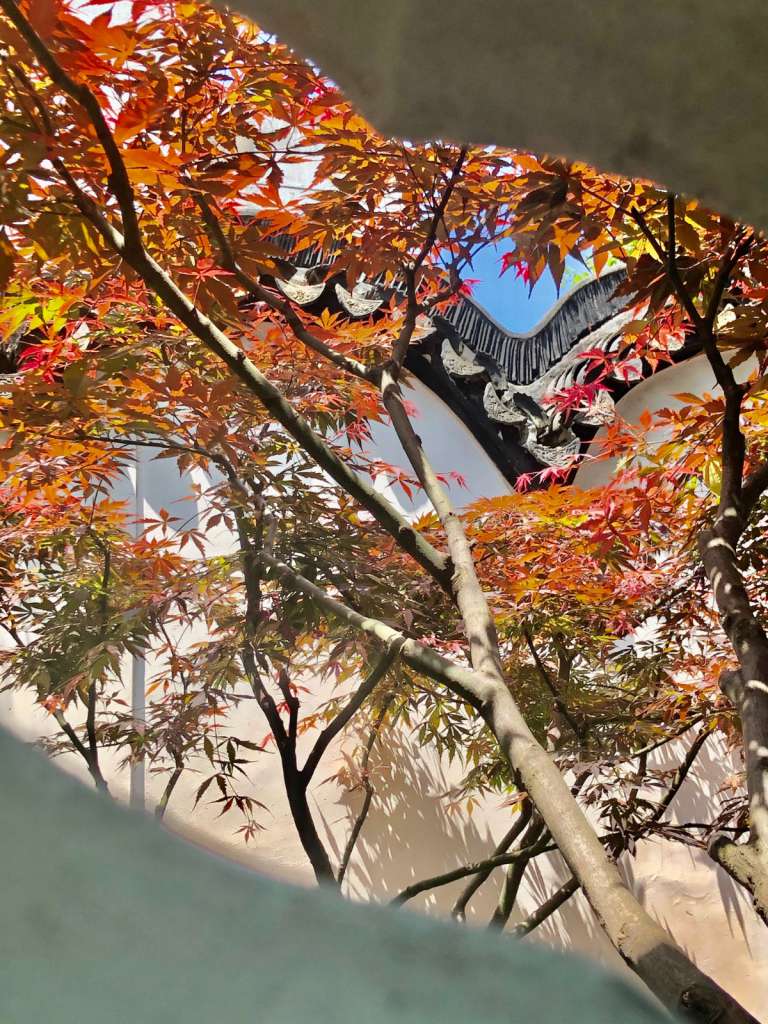
OLDEST GARDEN
The Canglang Pavilion is the oldest Chinese classical garden in Suzhou, and can be traced back 1,000 years ago. Canglang pavilion, literally means “surging wave”, and was built by demoted official Su Shunqin (蘇舜欽) from the imperial dynasty in the Northern Song dynasty.
Mountain Tower (看山樓) is one of the garden’s most exquisitely constructed buildings and visitors can enjoy panoramic view of the whole garden complex. Also, the zigzagging lanes connecting one scenic spot with another one wind through the garden. Walking in such a man-made formation, the historic Chinese garden strikes visitors with the feeling of touring primitive forest conspicuously.
With Incredible rock formations, verdant forests, winding corridors, ponds, historic halls and pavilions, these elements represent architectural beauty and natural allure of Chinese gardens – which is synonymous with tranquil and faraway world for visitors to revel in.
Image at the top: Creator: Stefan Fussan | Credit: Stefan FussanCopyright: CC-BY-SA 3.0; Stefan Fussan (www.fussan-arts.de)

